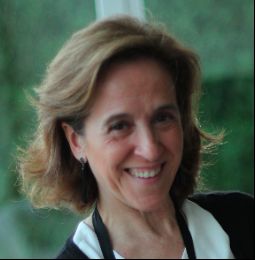Interview: Prof. Laura Oleaga, chair of the ESR Education Committee
For this month’s ESR News interview, we spoke to Prof. Laura Oleaga, from Barcelona, Spain, who serves on the ESR Executive Council as chair of the ESR Education Committee. She gave us an insight into the workings and recent achievements of her committee, as well as her own background within the ESR.
ESR News: What is the overall purpose of the ESR Education Committee and how does it operate?
Prof. Laura Oleaga: The purpose of the ESR Education Committee and its subcommittees is to promote education in radiology to achieve homogeneity in radiology education throughout Europe. To achieve this, the committee acts as a consultative body for all educational activities within the ESR and works closely with the European School of Radiology (ESOR), the European Board of Radiology (EBR), which organises the European Diploma in Radiology (EDiR), and the ESR’s e-Learning platform. The main objective of the committee is to achieve maximum quality in radiology training across Europe.
ESR: The committee interacts with a number of other groups and subcommittees. What roles do the European Training Assessment Programme Subcommittee (ETAP) and the Undergraduate Education Subcommittee play?
LO: Following the aim of harmonising the standards of radiology training in Europe, ETAP gives radiological institutions the opportunity to have their training programmes objectively assessed by external assessors nominated by the ESR, to guide their training in radiology according to the standards of the ESR European Training Curriculum for Radiology (ETC).
Moreover, it is important to promote the specialty of radiology in universities. In this regard the ESR Undergraduate Education Subcommittee is responsible for all activities aimed at the promotion of radiological education among medical students. The subcommittee has developed the paper Becoming a radiologist and is currently working on a guidance paper for all those interested or engaged in teaching radiology to medical undergraduates.
ESR: What is the nature of the Education Committee’s relationship with the European School of Radiology (ESOR) and the Radiology Trainees Forum (RTF)?
OL: ESOR is devoted to promoting education, providing a large number of activities to help young radiologists to improve their knowledge and skills in radiology.
The RTF comes under the umbrella of the ESR Education Committee and represents the views and interests of radiology trainees within the ESR, especially with regard to education, careers, research, and exchange programmes. The participation of trainees in the development of educational content such as the e-Learning platform is essential as they represent the most important target group of the educational activities organised by the ESR.
The ESR Education Committee, ESOR and RTF all share members in order to make sure their activities are coordinated, as they share the same goal: to achieve excellence in education in Europe.
ESR: What are the main issues on the committee’s recent and current agenda?
OL: One of the main projects is the annual revision of the ESR European Training Curriculum for Radiology (ETC), which has been endorsed by 66 national radiological societies worldwide. My predecessor, Prof. Birgit Ertl-Wagner, was responsible for the development of the ESR European Training Curriculum in its current form during her term. The ETC is a document of great importance that forms the basis for achieving the goal of uniform radiology training across Europe.
Another project that goes in the same direction is the European Diploma in Radiology (EDiR). We will continue promoting EDiR to achieve homogeneity in training and allow mobility and the exchange of professionals, leading to an enrichment of the profession.
ESR: What new issues or projects are on the horizon for the Education Committee?
OL: The importance of technology in education and the use of e-learning tools are increasingly becoming important and essential for the future of radiological training. Therefore, one of the priority objectives of the committee, besides the ETC revision, is the improvement of the e-Learning platform.
We are actively working on developing new content and continually updating it with the collaboration of other ESR entities and sub-entities.
We are working hard towards excellence in education with the development of content suitable for all levels of training, from undergraduate medical education to life-long learning, which is accessible to all ESR members.
ESR: Which other ESR committees or subcommittees have you been part of and how did you initially become involved?
OL: In 2011 an ETAP assessment visit was conducted in the hospital I am working at, the Hospital Clínic in Barcelona. After the experience gained during that visit I became part of a group of advisors and cooperated with the subcommittee as an ESR external assessor. Among other roles, I also served on the Education Committee as a delegate of the Spanish Society of Radiology (SERAM)
ESR: What motivates you to devote your time to the ESR and how has being involved affected you personally and professionally?
OL: Training and education are aspects of my profession that have always interested me. Since I began my residency in radiology I have been interested in training and I have always worked and enjoyed working with students and residents. My major motivation is the utmost importance of investing in education if we want to progress in the profession, and continued education in radiology is an essential aspect in this regard.




Education Subcommittee is responsible for all activities aimed at the promotion of radiological education among medical students.